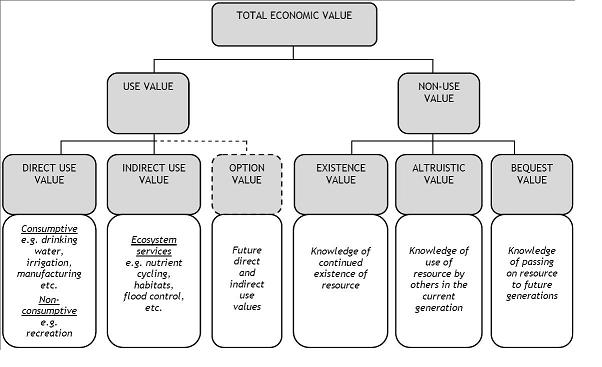
Why restore rivers? 'Just' for biodiversity conservation and improvement of river ecosystems? Or are other benefits of river restoration valuable enough to restore rivers as well? When is it worth to restore a river from an economic perspective?
River restoration can significantly increase the services provided by a healthy ecosystem, too often neglected by decision makers, such as flood control, groundwater recharge, pollution removal, recreational opportunities, increased property values due to the increasing demand for more natural surroundings.
Conversely, river restoration schemes may imply significant changes in water management and land use and hence negative economic impacts on certain economic activities; it may hamper navigation or agriculture for instance. In order to support river basin planning and decisions in river related policies, it is therefore very important to assess these impacts with appropriate and transparent methods, and weigh them against the benefits foreseen.
Several approaches are available, ranging from a classical Cost Benefit Analysis (CBA), to Multi Criteria Analysis (MCA), to the more recent perspective of “ecosystem services”. Among the main methodological issues to be tackled, the following can be highlighted:
• what quality elements, variables and indicators to use to assess the status of river ecosystems and of all stakeholders involved? Are there agreed lists/categories of services (flood reduction, water purification, recreation) provided by healthy river ecosystems?
• how do river status and processes influence the system’s variables, and are we able to model these processes involved in the provision of ecosystem services?
• when is it appropriate to monetize the services provided? What valuation techniques (contingent valuation, replacement cost, hedonic price, etc.) are available?
Click graphic to enlarge

One proposed logical framework to represent the “total economic value” of water resources (from “Economics for the Environment Consultancy Ltd (eftec), 2010. Scoping Study on the Economic (or Non-Market) Valuation Issues and the Implementation of the WFD – Final Report for the EC DG Environment”).
Featured case: the Room for the River project 'Millingerwaard'
The project Millinger Waard is located in the ‘Gelderse Poort’ (‘gate to Gelderland’) where the Rhine enters the Netherlands. The project, which is part of the Dutch ‘Room for the River’ program, is located in the easternmost part of the River Rhine in the Netherlands, where Germany and the Netherlands have a long history of transboundary cooperation on flood management.
The project was implemented over a period of more than 10 years, with the objective to increase flood safety (lowering the water level by 9 cm during peak discharges) and nature development. Activities include the creation of a secondary river channel, wetland development, mineral extraction and the development of recreation facilities. The project is a good example where local financial-economic benefits outweigh the negative impact caused by the loss of agricultural land (some 40% of the total agricultural area was lost due to the project). Read the entire case study.